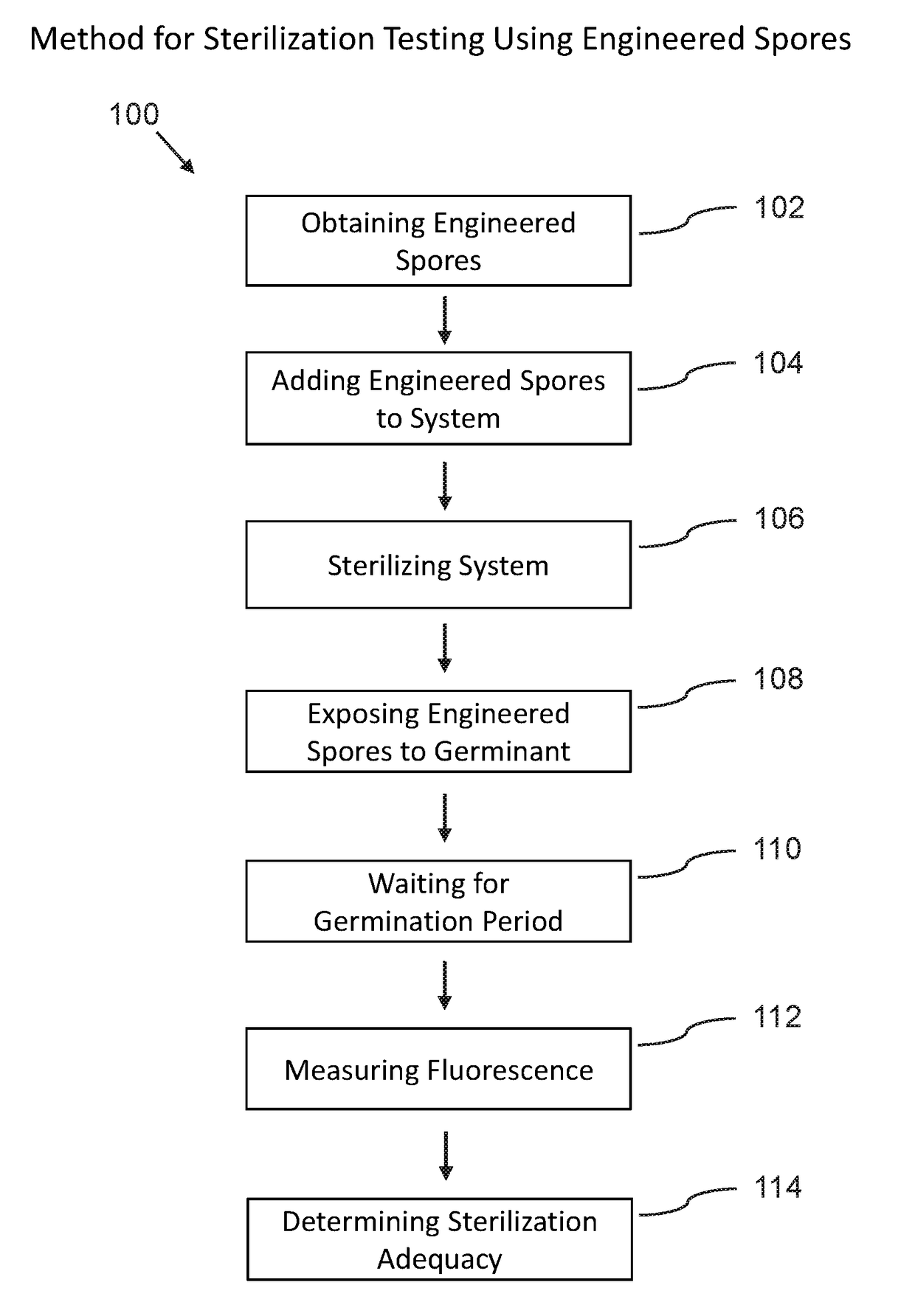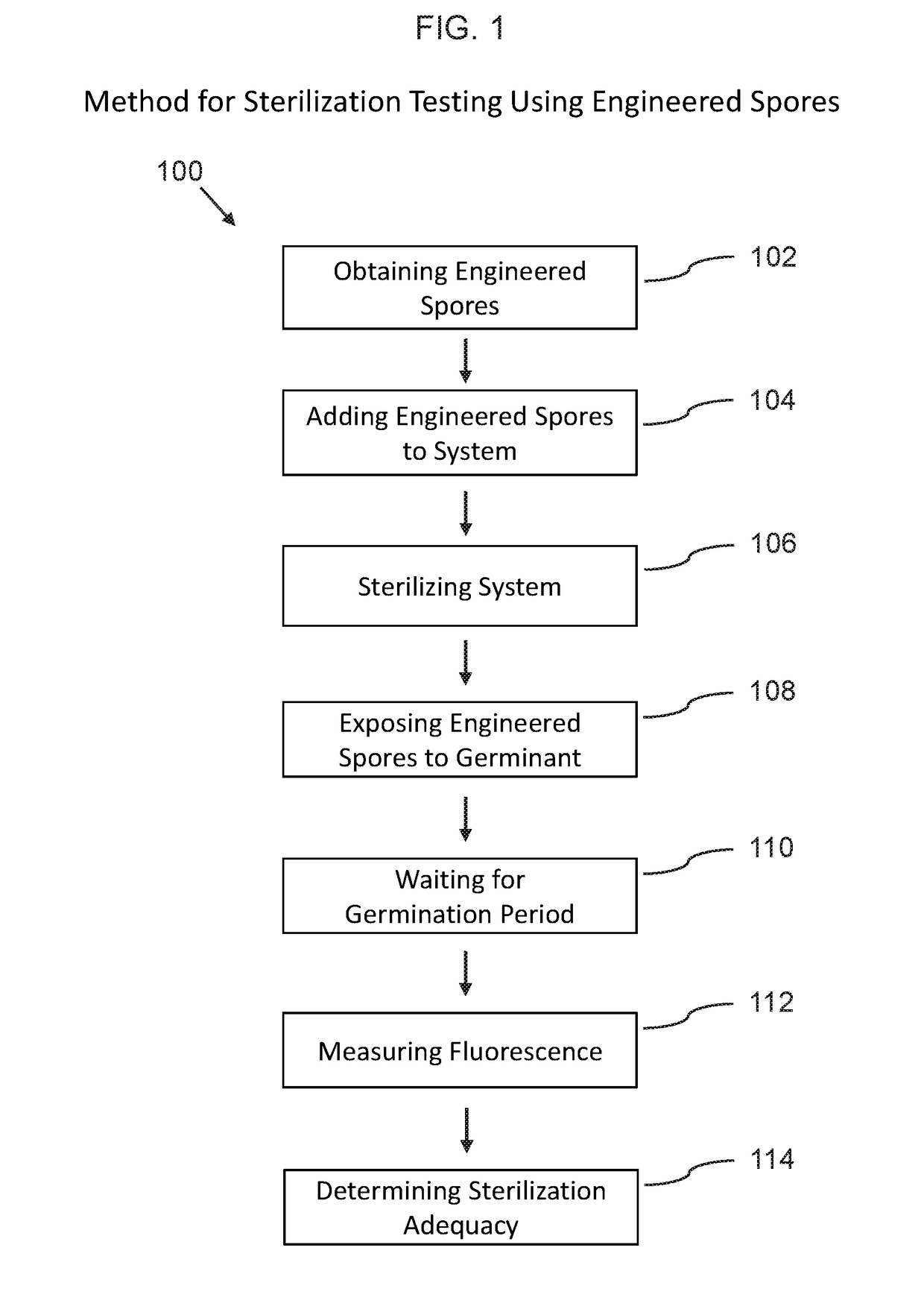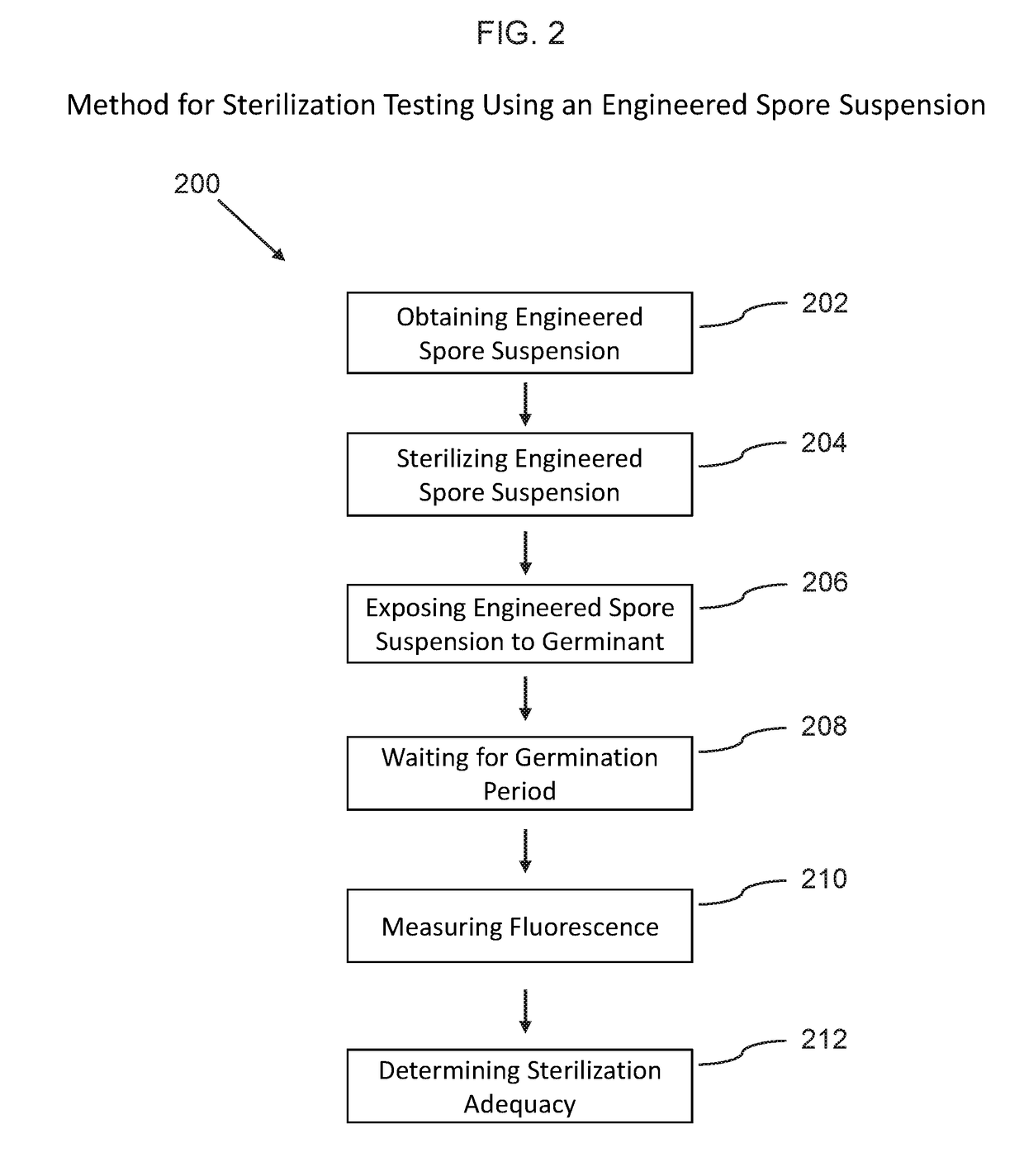Phenotypic engineering of spores
a technology of spores and engineering methods, applied in the field of phenotypic engineering of spores, can solve the problems of incomplete enzyme inactivation being not a reliable sterility assurance test, enzyme-based indicators not providing the same type of sterility assurance obtained, and the appearance of sterilized articles must be stored for a long time. to achieve the effect of determining the susceptibility of microbial spores
- Summary
- Abstract
- Description
- Claims
- Application Information
AI Technical Summary
Benefits of technology
Problems solved by technology
Method used
Image
Examples
examples
[0107]The following non-limiting example embodiments provide results that demonstrate the effectiveness of using phenotypic engineered spores for biosensing and sterility testing. All parts and percentages are by weight unless otherwise specified.
example embodiment 1
[0108]Detection of Escherichia coli Containing β-Lactamases
[0109]Detection of bacteria containing β-lactamases (EC 3.5.2.6) is clinically important because β-lactamases are usually good markers of bacterial resistance to β-lactam antibiotics. This example illustrates an application of the invention in the LEXSAS™, a biosensing system previously used for detecting low levels of bacteria in near real time (U.S. Pat. No. 6,872,539, Rotman; and Rotman, B. and Cote, M. A. Application of a real time biosensor to detect bacteria in platelet concentrates. (2003) Biochem. Biophys. Res. Comm., 300:197-200). Using self-reporting, fluorogenic, phenotypic engineered spores in the LEXSAS™ allows the LEXSAS™ to function more efficiently than other systems in which normal spores were used as detectors.
[0110]Enzymatic Production of Germinant: In this example, E. coli cells (the analyte) produce L-alanine (the germinant) by cleavage of L-alanyl deacetylcephalothin according to the following reaction:...
example embodiment 2
[0118]Detection of Pseudomonas aeruginosa by Aminopeptidase Activity
[0119]This is another example embodiment illustrating the use of the invention in the LEXSAS™. The bacterial analyte is P. aeruginosa (ATCC 10145), a well-known human pathogen.
[0120]Enzymatic Production of Germinant: In this example, cells of P. aeruginosa (the analyte) have aminopeptidases producing L-alanine (the germinant) by hydrolysis of L-alanyl-L-alanine (Ala-Ala), a germinogenic dipeptide that does not induce spore germination by itself. Aminopeptidases belong to an extended family of enzymes that is present in practically all bacterial species and accordingly are considered universal bacterial markers. The biosensor response to bacterial analytes is based on their generating L-alanine from Ala-Ala according to reaction (2).
L-alanyl-L-alanine+H20→ - - - →L-alanine (2)
[0121]Spores: Spores derived from B. cereus 569H (ATCC 27522) were prepared and engineered as indicated above for Example Embodi...
PUM
| Property | Measurement | Unit |
|---|---|---|
| temperature | aaaaa | aaaaa |
| temperatures | aaaaa | aaaaa |
| temperatures | aaaaa | aaaaa |
Abstract
Description
Claims
Application Information
 Login to View More
Login to View More - R&D
- Intellectual Property
- Life Sciences
- Materials
- Tech Scout
- Unparalleled Data Quality
- Higher Quality Content
- 60% Fewer Hallucinations
Browse by: Latest US Patents, China's latest patents, Technical Efficacy Thesaurus, Application Domain, Technology Topic, Popular Technical Reports.
© 2025 PatSnap. All rights reserved.Legal|Privacy policy|Modern Slavery Act Transparency Statement|Sitemap|About US| Contact US: help@patsnap.com



